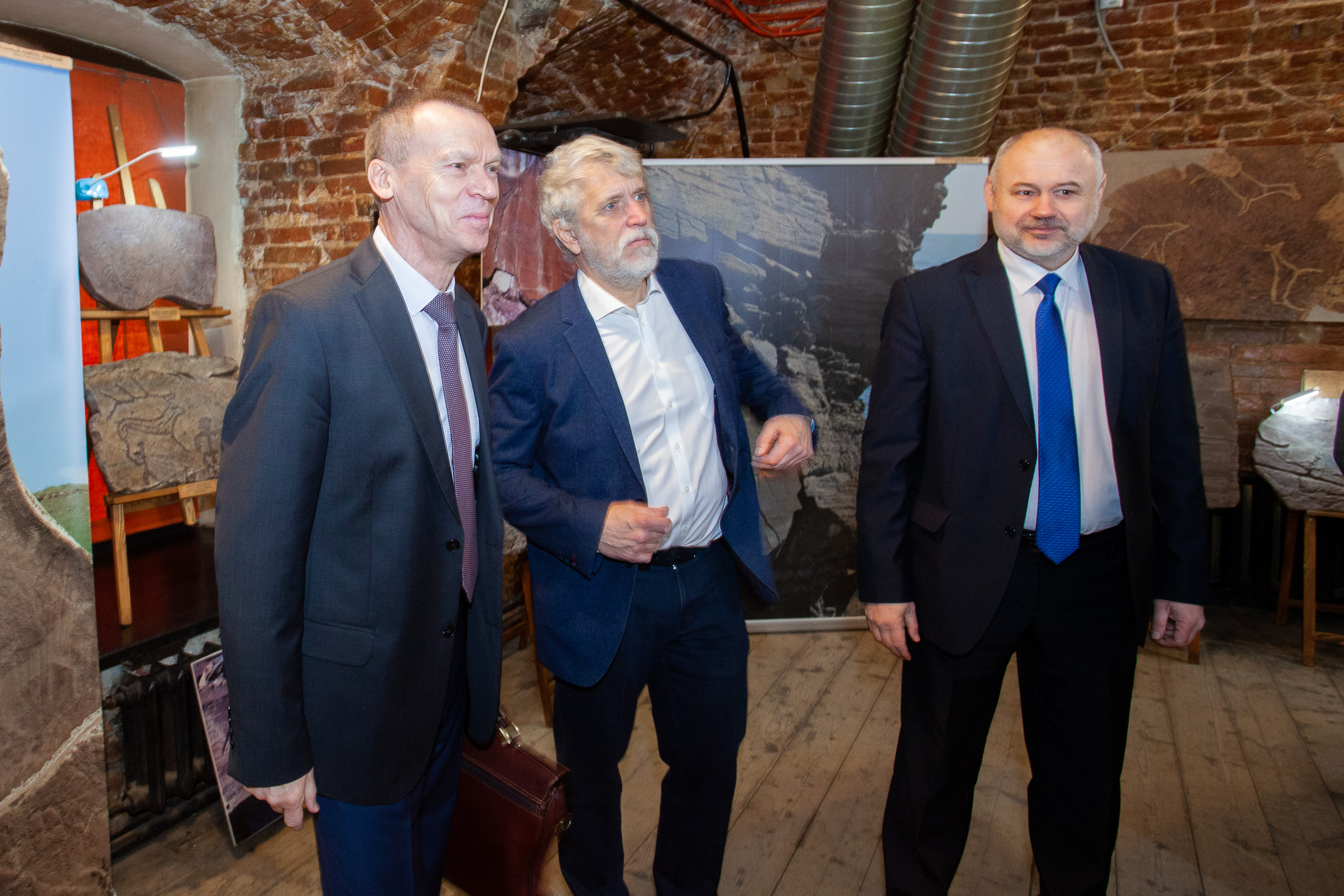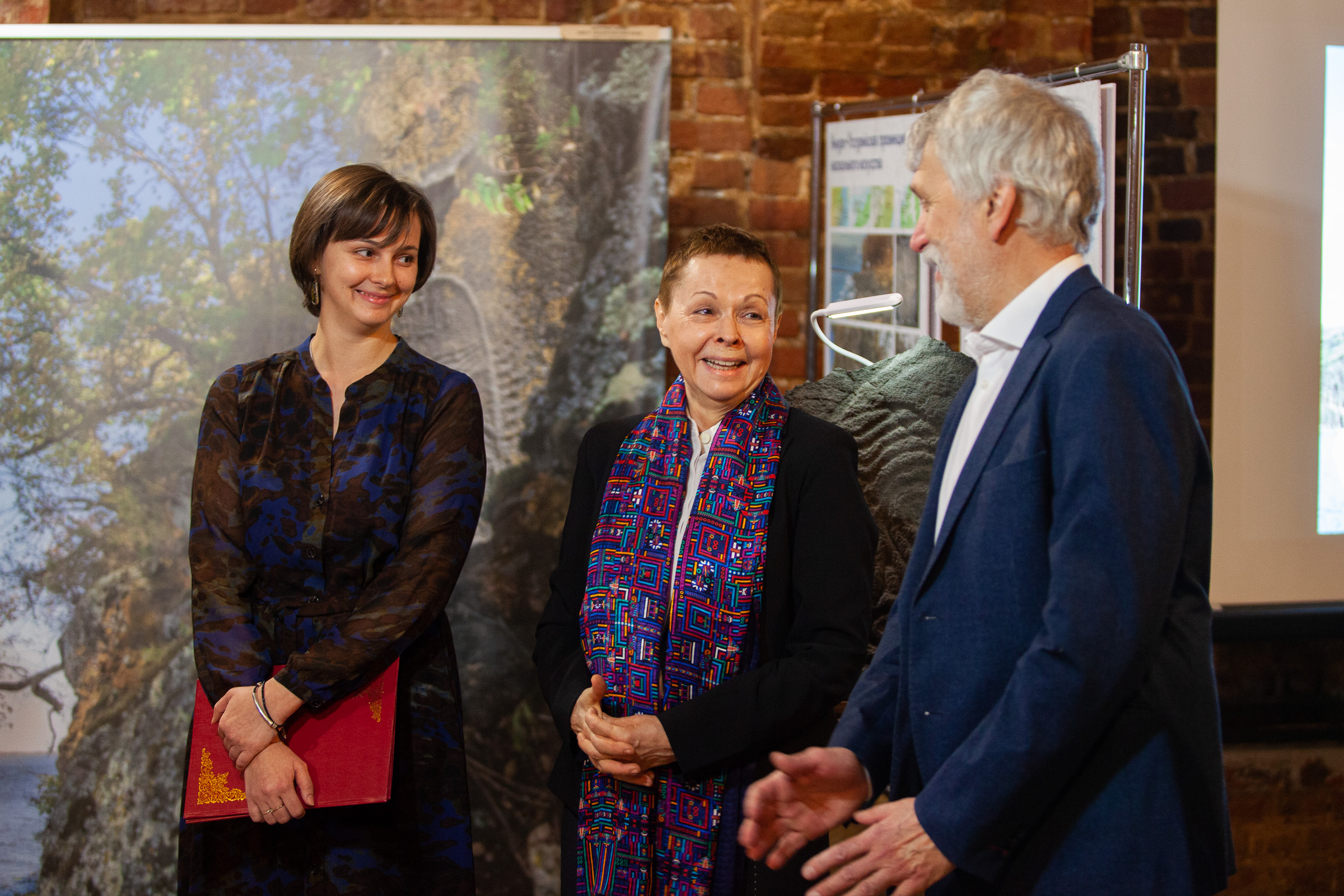05.02.2020
On February 4, the exhibition “Through Centuries and Spaces: Rock Art of Russia” was opened at the Institute of History and Archives of RSUH. It is dedicated to the memory of Professor Ekaterina Devlet, Head of the Center for PaleoArt Studies of the Institute of Archaeology of the RAS, who worked for many years at RSUH.
The exhibition was presented Dr. Elena Levanova, a student of Dr. Devlet, graduate of the Knorozov Mesoamerican Center of RSUH and the current Head of the Center for PaleoArt Studies. She continues her teacher’s work of preservation and presentation of Russian rock art heritage sites to the UNESCO Committee.
In the welcoming speech, Rector Bezborodov said that the exhibition was one of the first major projects of the recently created Knorozov Multimedia Center: “In the context of curtailed hours devoted to historical training, the work of Knorozov Multimedia Center and Knorozov Mesoamerican Center, including the exhibition activities, is very important for the training of highly qualified specialists. The teams of the two centers are committed to conducting research at a competitive level … which would be appraised in Russia and abroad.”
“It is pleasant to open an exhibition in one of the leading historical universities,” said Dr. Nikolay Makarov, Director of the Institute of Archaeology of the Russian Academy of Sciences. - Primitive art, on the one hand, is familiar to us all from anthologies of world archaeology, yet on the other, many monuments are beginning to fall out of sight, because they are far away, they are difficult to study, and the methods of their pictorial transmission do not make it possible to understand their true look or feel them in an authentic environment. And everything that is unfamiliar requires research. Our Institute of Archaeology has been involved in the process of studying these monuments for several decades. For a long time, the main figure in this matter was Dr. Ekaterina Devlet, who created the Center for PaleoArt Studies. She understood the importance of modern recording, of comparative study of samples from different regions, of organization of exhibitions with serious scientific commentaries. For the first time an exhibition of this kind was held at RSUH in 2005. Since then there have not been many exhibitions, and today is a significant step. Here we have leaders of regional ministries of culture, directors of the largest regional museums - this is a guarantee that we have an understanding of great common goals. Together with RSUH, we will be promoting these monuments and will try to have them included in the UNESCO list. ”
Particular attention in the preparation of the exhibition had been paid to the rock art monuments, which since 2003 have been included in the Preliminary List of UNESCO World Heritage Sites from Russia. They are the petroglyphs of Sikachi-Alyan, the Kapova cave, the petroglyphs of the White Sea and Lake Onega, Oglakhta.
“The further nomination fate of these monuments largely depends on their presentation to the general public and the experts,” said Dr. Daria Pyatygina, Director of the Knorozov Multimedia Center.
This is a debut exhibition project. Another large-scale project of the Center, which started last week, is a screening of documentaries jointly with the TV channel “The Unknown Planet”. In February, the films will be dedicated to the cultures of Asia and the Far East. And the faculty of RSUH and, possibly, the Russian Academy of Sciences, will be giving talks about the profession of Cultural Studies, archaeology or art criticism, and discuss urgent issues of humanities, among other things.
The staff of the Institute of Archaeology, who have been striving to promote the monuments for many years, noted: “Our goal is to ensure that the monuments be included in the Permanent List of UNESCO”.
Dr. Galina Yershova, Director of the Knorozov Mesoamerican Center, shared her memories of the friendship with Dr. Ekaterina Devlet. “She was becoming a luminary of the rock art academic community right in front of my own eyes. In the 90s, when I sent her on an expedition to Mexico, Aeroflot announced that it was selling roundtrip tickets to anywhere in the world, for $100. Being naïve, we rushed to get this ticket, but they would not give us the return trip. And we began to seek justice, to send requests to Aeroflot on behalf of the Institute of Archeology. Aeroflot gave in and sold us the promised ticket. I think this was the only such ticket that Aeroflot sold to anyone. Ekaterina Georgievna studied petroglyphs in Latin America, and since then it was no longer possible to stop it. She inherited the passion for cave art from her mother, but her innate passionarity drove her to do the unbelievable even with a serious illness. Katya created a powerful national school, so it’s a great joy for me to open an exhibition in memory of her. ”
Mr. Leonid Yeremin, Minister of Culture of the Republic of Khakassia said that he observed most of the cave paintings in the area of their natural location. “Such exhibitions should become routine, since they help to foster a culture of historicism in society. The exposition illustrates outstanding achievements in the field of culture, since each cave painting is a consequence of a certain breakthrough. Petroglyphs are unique in that they contain not only historical, but also national information. They, in accordance with the name of the exhibition, cut through space and time, bringing us the information that other types of sources can not, since this information is associated with ancient rituals and spiritual quests. I am sure that the Republic of Khakassia will act as a reliable partner for such projects. ”
Dr. Alexey Stoyanov Director of the Tomsk Pisanitsa Museum-Reserve noted that the other day he was in the Manege at the Dali exhibition and did not understand what the excitement was about.
“People should queue here! Because when a person learned to create images, he essentially acquired power over time. … I am grateful to RSUH for the opportunity to visit the exhibition organized in such a wonderful place. ”
Geographically, the exposition covers four regions: the Far East, the Urals, Karelia and Khakassia. It also presents Pegtymel's petroglyphs in Chukotka and various monuments of Western and Southern Siberia, from the Paleolithic to the Middle Ages.
Visitors to the exhibition can see various techniques for applying images (paintings and petroglyphs) and many types of monuments: cave art, images on open-air rocks, images on separate boulders and slabs from barrows.

